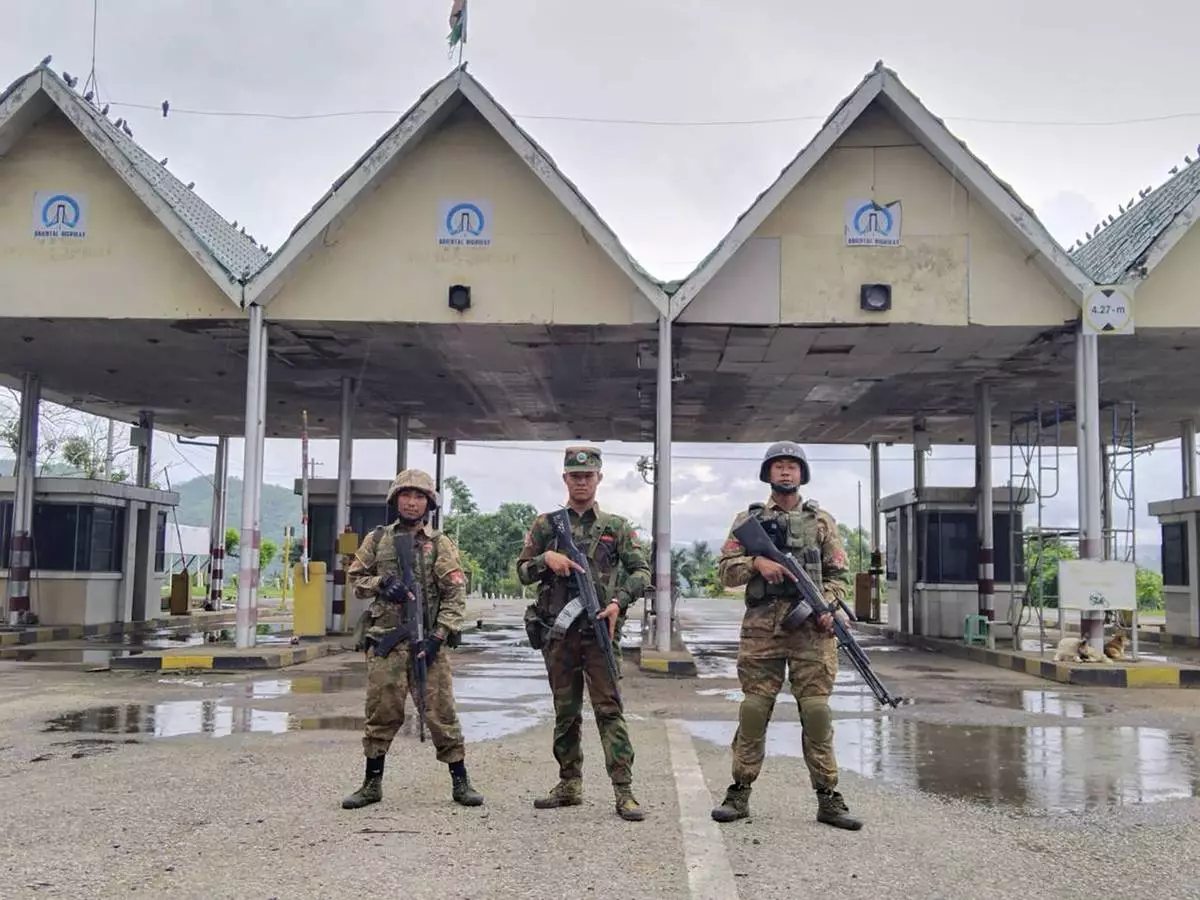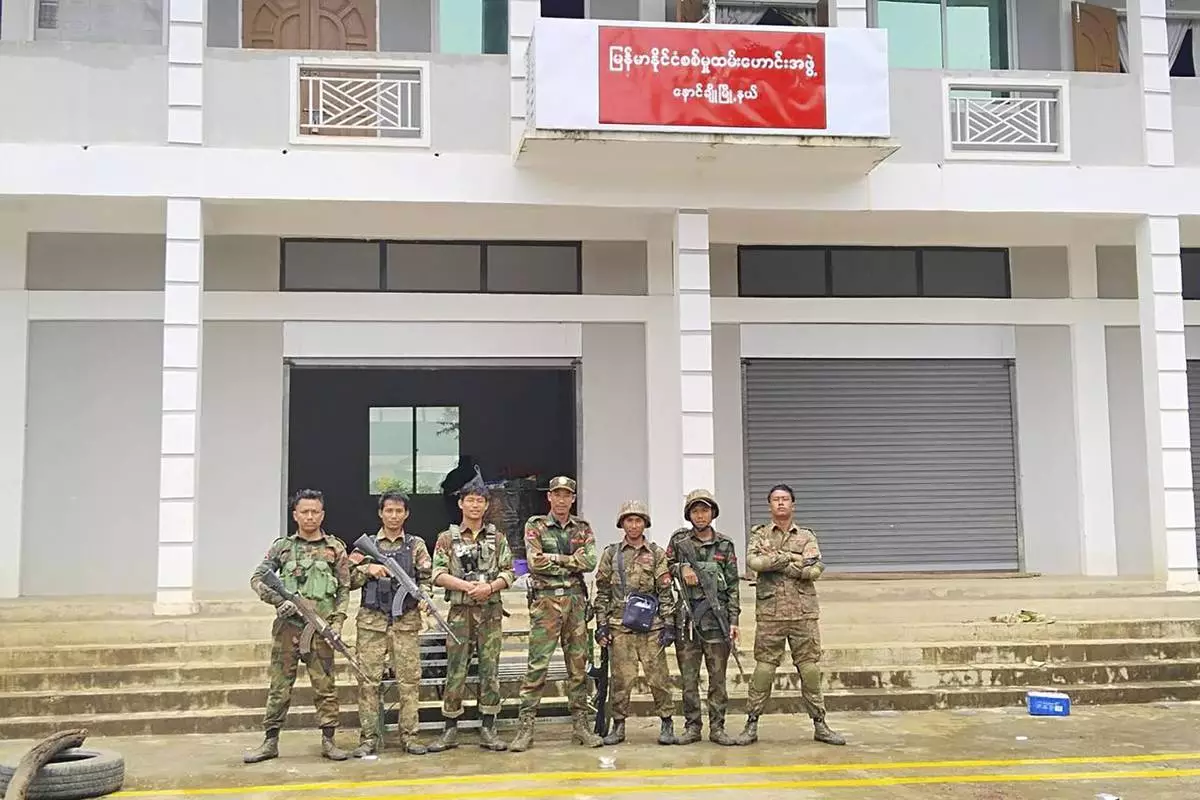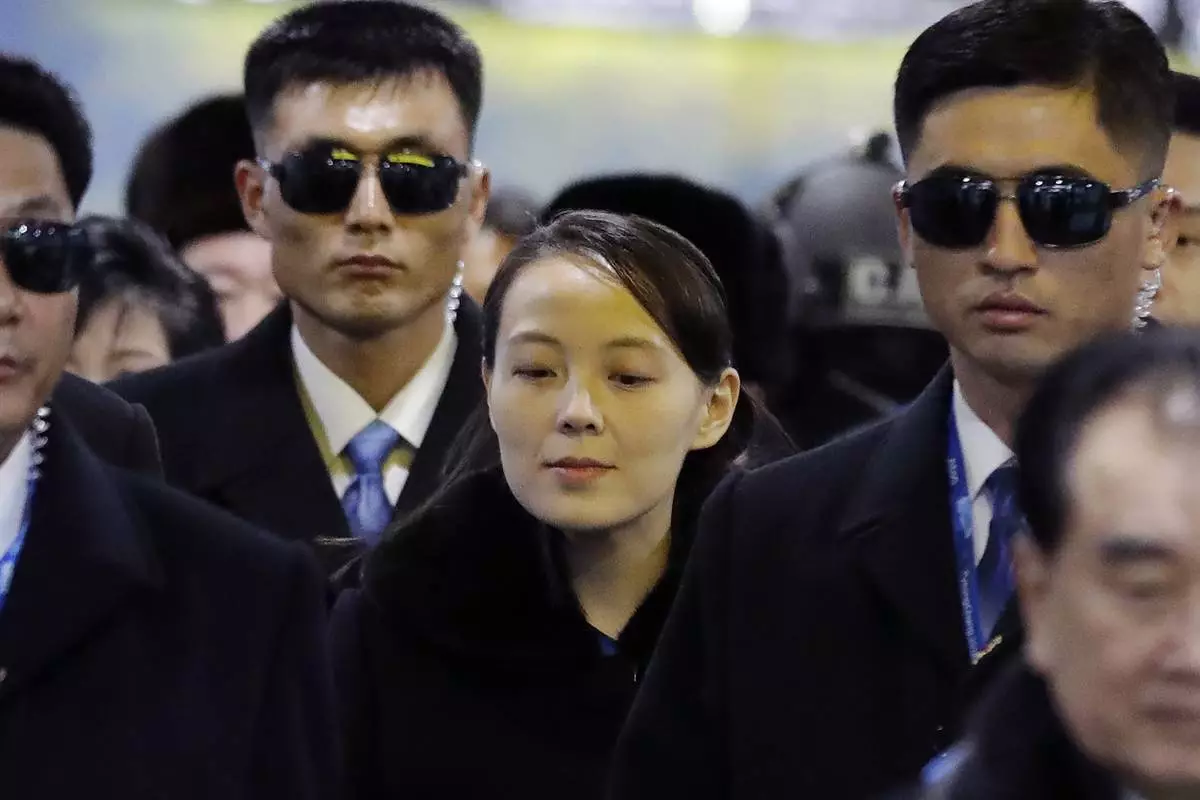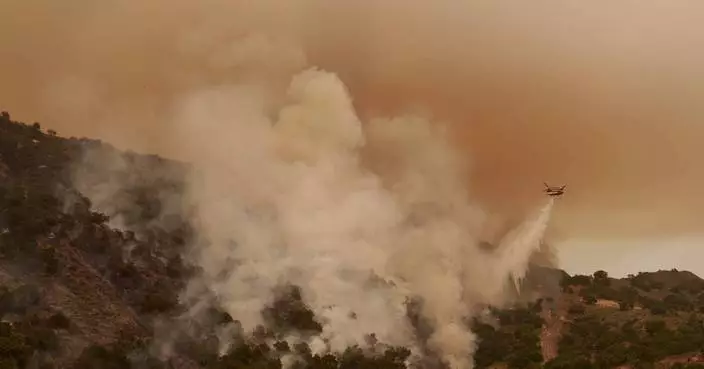BANGKOK (AP) — New fighting has broken out in northeastern Myanmar, bringing an end to a Chinese-brokered cease-fire and putting pressure on the military regime as it faces attacks from resistance forces on multiple fronts in the country's civil war.
The Ta'ang National Liberation Army, one of three powerful militias that launched a surprise joint offensive last October, renewed its attacks on regime positions last week in northeastern Shan state, which borders China, Laos and Thailand, and the neighboring Mandalay region with the support of local forces there.
Since then, the Myanmar National Democratic Alliance Army has joined in, and by Friday, combined forces from the two allied militias had reportedly encircled the strategically important city of Lashio, headquarters of the regime's northeastern military command.
This is the next phase of October's “1027” offensive, said Lway Yay Oo, spokesperson for the TNLA, which last week said the military provoked retaliation with artillery and airstrikes despite the cease-fire.
“In phase two, our number one aim is the eradication of the military dictatorship, and number two is the protection and safety of local people,” she said.
Thet Swe, a spokesperson for the military regime, which seized power from the elected government of Aung San Suu Kyi in February 2021, accused the militias of putting civilians in jeopardy by restarting the fighting.
“As the TNLA are starting to violate the cease-fire, the Tatmadaw is protecting the lives and the property of the ethnic people,” he said in an email to the AP, referring to the military by its Burmese name.
There was no indication that the third ethnic armed organization that makes up the Three Brotherhood Alliance, the powerful Arakan Army, has joined in the renewed fighting in Shan state, but its troops have never stopped fighting in its home Rakhine state, which was not covered by the Jan. 11 cease-fire.
The TNLA claims to have already captured more than 30 army outposts, and to now control the western part of Mogok, whose ruby mines make it a lucrative target. There is also fighting for the town of Kyaukme, which sits at a highway crossroads, and Nawnghkio to the southwest, which leads toward the major military garrison town of Pyin Oo Lwin along the same highway.
“That's where you need to cut it off to prevent the military from sending reinforcements,” said Morgan Michaels, a Singapore-based analyst with the International Institute of Strategic Studies who runs its Myanmar Conflict Map project.
In Mandalay, the region west of Shan, a local People’s Defense Force — one of many armed resistance groups that have spung up in support of the underground National Unity Government, which views itself as Myanmar’s legitimate administration — joined the TNLA's offensive.
Osmond, a spokesperson for the Mandalay People’s Defense Force who would only give his nom de guerre because of safety concerns, said his and other local resistance groups have seized nearly 20 military outposts.
The October offensive by the Three Brotherhood Alliance made rapid advances as the militias took large expanses of territory in the north and northeast, including multiple important border crossings with China and several major military bases.
The alliance militias have close ties to China, and it's widely believed that the offensive had Beijing's tacit approval because of its growing dissatisfaction with the military regime's seeming indifference to the burgeoning drug trade along its border and the proliferation of centers in Myanmar at which cyberscams are run, with workers trafficked from China and elsewhere in the region.
China then helped broker the cease-fire in January, bringing the major fighting in the northeast to an end, even as other ethnic armed organizations and PDF groups launched their own attacks on regime positions elsewhere around the country.
With the renewed violence in the northeast, China's Foreign Ministry told the AP it stood ready to again provide support for peace talks, but would not say whether it had been in direct contact with the Three Brotherhood Alliance or the military State Administration Council.
“China urges all parties in Myanmar to earnestly abide by the cease-fire agreement, exercise maximum restraint, disengage on the ground as soon as possible, and take practical and effective measures to ensure the tranquility of the China-Myanmar border and the safety of Chinese personnel and projects,” the ministry said in a faxed reply to questions.
The Myanmar army doesn't appear to have been surprised by the TNLA attacks, with evidence that it mobilized forces and prepared defenses as well as security checkpoints and patrols ahead of the renewed offensive, Michaels said.
“They didn't get caught completely off guard, although they've not been able to respond yet, there's been no counter-offensive,” he said.
It is not yet clear what the TNLA's objectives are, and it could be that the group is just looking to expand gains and consolidate positions now while the military is stretched thin by fighting on several fronts, and before new batches of conscripts are trained for service.
Already, 5,000 conscripts have been added to the military's ranks and 10,000 more are expected before the end of the year. Thet Swe said they would not be sent into combat, but instead be used as sentries and other such duties, which would then free up better trained solders for the front lines.
“If the conscription carries forward and the military can halt these offenses and make it through to the end of the year, the next year there could be a counter-offensive,” Michaels said. “So this is the closing window to get this done."
Likewise with the MNDAA, it is not clear whether it is planning to join the broader offensive or whether it intends to take encircled Lashio by force, lay siege to it, or simply tie up the troops now trapped there. The group did not respond to requests for comment.
“If you compare it to 1027 the first time, it's not the same rapid collapse of the military,” Michaels said.
“The military is still taking losses but it's just not the same kind of scale or pace. But if the MNDAA completely joins, then we're looking at a different situation.”

In this handout photo provided by Mandalay People's Defence Force, members of the Mandalay People's Defence Force pose for a photograph with the group's flag in front of the captured police station in Madaya township in Mandalay region, Myanmar, July 2, 2024. New fighting has broken out in northeastern Myanmar, bringing an end to a Chinese-brokered cease-fire and putting pressure on the military regime as it faces attacks from resistance forces on multiple fronts in the country's civil war. (Mandalay People's Defence Force via AP)

In this handout photo provided by Mandalay People's Defence Force, members of the Ta'ang National Liberation Army, one of the ethnic armed forces in the Brotherhood Alliance, and the Mandalay People's Defence Force pose for a photograph in front of the captured toll-gate in Nawnghkio township in Shan state, Myanmar, June 26, 2024. New fighting has broken out in northeastern Myanmar, bringing an end to a Chinese-brokered cease-fire and putting pressure on the military regime as it faces attacks from resistance forces on multiple fronts in the country's civil war. (Mandalay People's Defence Force via AP)

In this handout photo provided by Mandalay People's Defence Force, members of the Ta'ang National Liberation Army, one of the ethnic armed forces in the Brotherhood Alliance, and the Mandalay People's Defence Force pose for a photograph in front of the captured building of the Myanmar War Veterans' Organisation in Nawnghkio township in Shan state, Myanmar, June 26, 2024. New fighting has broken out in northeastern Myanmar, bringing an end to a Chinese-brokered cease-fire and putting pressure on the military regime as it faces attacks from resistance forces on multiple fronts in the country's civil war. (Mandalay People's Defence Force via AP)











